#girls sports
Explore tagged Tumblr posts
Text

This is fantastic. 👏🏻👏🏻👏🏻
Social commentary on the state of women’s sports right now. That last line is gold. 🤭😂
Spread this.
#feminism#radical feminism#radblr#gender critical#terfblr#sexism#sex not gender#rad fem#terfsafe#radical feminist safe#olympics#paris olympics#paris 2024#women’s safety#women’s sports#competitive sports#girls sports#womens rights#women’s rights#trans visibility#trans athletes#transwomen are men#trans sports#female sports#sports#transfeminism#transwomen#peak trans#peak#gender violence
35 notes
·
View notes
Text
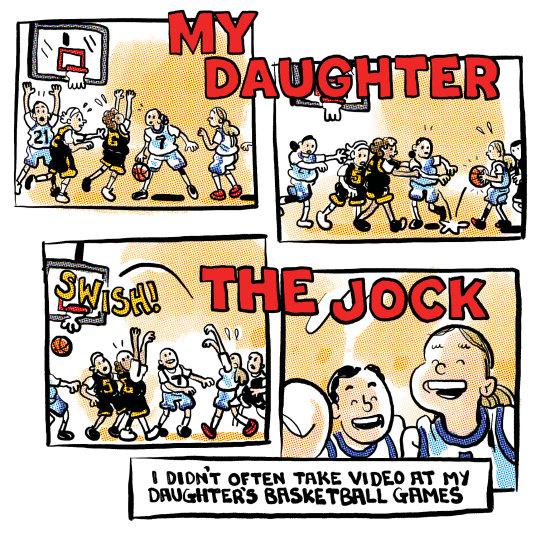
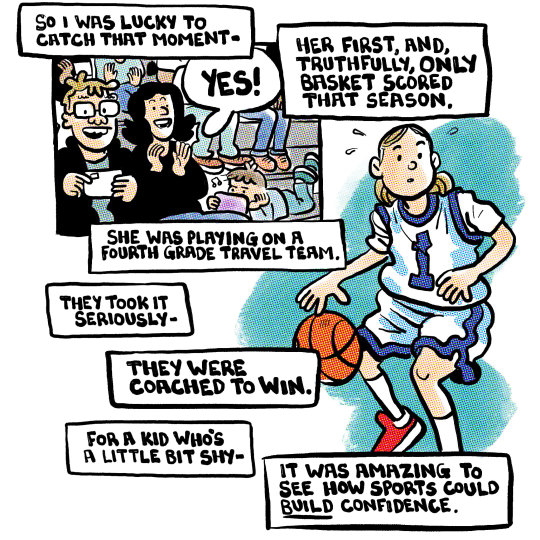



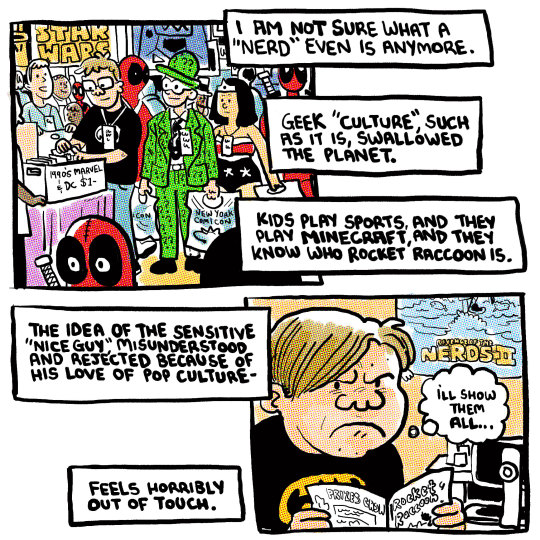


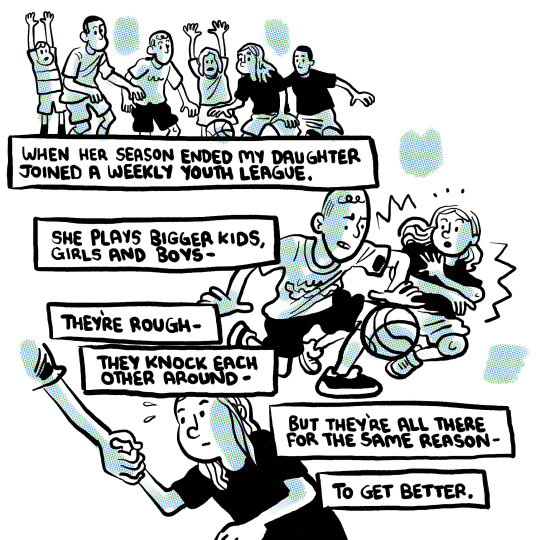

My Daughter the Jock
The cartoon essay which inspired The Fifth Quarter middle-grade graphic novel series.
70 notes
·
View notes
Text

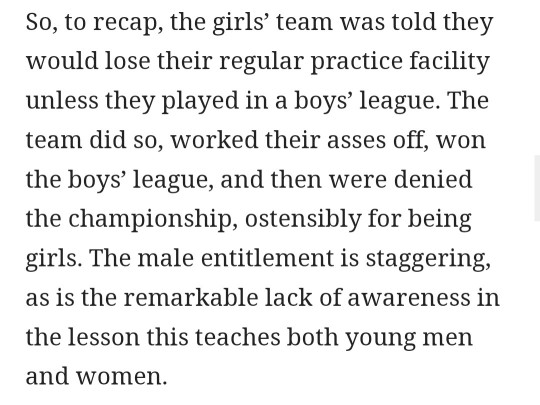
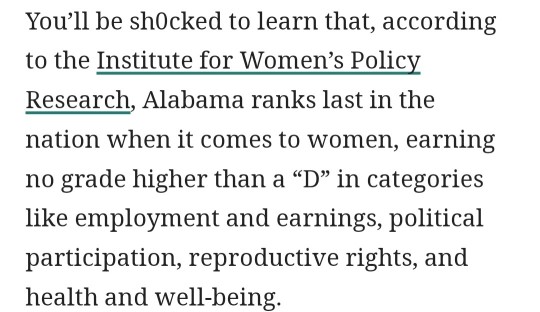
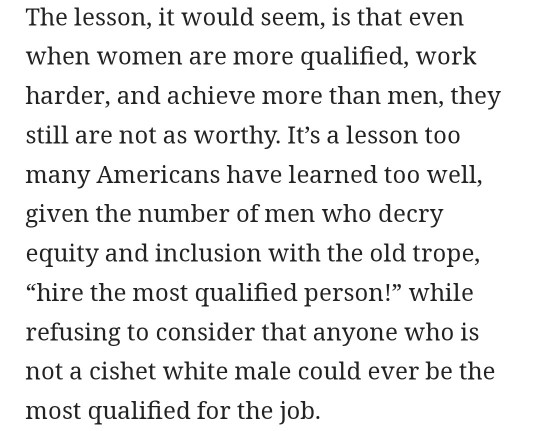


199 notes
·
View notes
Text
Information on Genetics, the complexities of sex, and the history of gender verification in sports.
If you wish to become more knowledgeable in nuance discussion of transgender and intersex people in sports, please go through and share this interactive.
#trans rights#intersex#genetics#biology#transgender#donald trump#united states#intersex rights#sports#girls sports
5 notes
·
View notes
Text
Help Support Girls Sports & Performering Arts
Scan the QR Code

Or click the link
Helps with fees, costumes/uniforms, etc
REBLOG
3 notes
·
View notes
Text
In the 90s, every other sports movie had a girl playing on the boys' team, but thanks to advances in TERF Science, we now know that girls would simply explode like a blood-filled tick at the slightest rough contact from even the nerdiest bepenised teenager.
27 notes
·
View notes
Text
right so i just went to my little sisters football match at school and i cried - i remember when i was a primary school and how girls football was cancelled pretty much every week, we havd a training session a month if we were lucky, how we were given the boys kit (the label literally saying ‘boy 9-10’ (or whatever size you were) inside, how we’d have two matches a term.
and to see my sister and her team be in kit that fit them and was purchased for them, to see them have dedicated after school football sessions, an orgainsed school league to play in - made me realise just how far we’ve come.
these girls are getting the chance to properly enjoy sport, and seeing it was so beautiful - they were competitive and feisty and just having so much fun, and i remember not getting that the same way they are now.
their older brothers were getting involved in the sidelines - none of that bs about girls sport being ‘less’, shouting ‘down the line!’ and ‘in the box!’ - they were loving it and taking it seriously
and obviously there is so much left, less girls than boys are likely to stick to sport, and sexism still runs rampant in teenage boys - but the growth that’s happed in literally the five years has been incredible!
we’re taking steps in the right direction.
#women’s football#lionesses#feminism#football#primary school#girls sports#weuro2022#<- that changed so much
5 notes
·
View notes
Text

By: Gregory Brown
Published: Sep 1, 2023
About the Author
Dr. Greg Brown is a professor of Exercise Science at the University of Nebraska at Kearney where he also serves as the Director of the LOPERs General Studies program. His primary teaching responsibilities are undergraduate and graduate courses in Exercise Physiology, but he has also taught courses in Introductory Anatomy & Physiology, Sports Nutrition, Research Methods, and Professional Development in Exercise Science. His research has evaluated the effects of nutritional supplements on the physiological response to exercise, the physiological responses to various types of exercise, effective teaching in the exercise science program, and sex-based differences in sports performance. He has authored or co-authored over 50 peer reviewed publications and serves as a peer-reviewer for over two dozen academic journals. He is a member of the American College of Sports Medicine (ACSM), the National Strength and Conditioning Association (NSCA), and the Association of American Educators (AAE).
He and his wife (Amber) have two adult sons and one daughter-in-law. Sadly, both their cat and dog passed away in the past year. His hobbies include running, hunting, fishing, studying history, and watching movies.
--
In the current battle over women’s and girls’ rights to female-only sports, a commonly heard mantra is that there are no sex-based differences in sports performance before puberty. Those who make this claim often contend that if a male is put on puberty blockers before age 12 (or Tanner development stage 2; whichever comes first), he can compete fairly in the female category. But is this really true?Are there really no differences in athletic performance between boys and girls before the onset of puberty? Do puberty blockers administered to children really erase male sex-based athletic advantages? Below, I’ll try to provide answers to these questions.
Like many things currently being put forth in public discourse as settled science, the presence or absence of sex-based athletic differences before puberty is not an open and shut case. There are few databases of records for children’s competitive sports performance and there has been limited scholarly research evaluating sex-based differences in competitive sports performance before puberty. Currently, there are no consensus statements from professional organizations such as the North American Society for Pediatric Exercise Medicine (NASPEM), the National Strength & Conditioning Association (NSCA), the American College of Sports Medicine (ACSM), or the National Athletic Trainers’ Association (NATA) stating that there are, or are not, sex-based differences in athletic performance before puberty.
Below, I will cover the main reasons our data on pre-pubertal sex differences in athletic performance is relatively poor, and draw some preliminary conclusions based on the data we do have that indicates such differences are actually quite significant.
Lack of Records
One challenge that arises when trying to determine whether there are sex-based differences in athletic performance before puberty is the limited availability of records documenting competitive athletic performance in children. For adults participating at the Olympic and collegiate levels, meticulous record-keeping is the norm, and these records are readily accessible online. A simple internet search yields numerous listings of Olympic and collegiate records spanning various sports such as swimming, track and field, cross country, bicycling, and more.
Similarly, records for sports in secondary schools are also carefully maintained. In the United States, it is fairly easy to obtain the results of the most recent state high school track championship from news sources and on the state scholastic athletic association websites. Most secondary schools additionally showcase records for track and field, cross country, and other sports. The abundant availability of records in the Olympic, college, and secondary school arena makes it very easy to compare male and female athletes competing in the same events at the same level of competition. Such comparisons vividly illustrate that once puberty sets in, males outperform females by 10-30 percent (depending on the sport and event).
However, most sports involving pre-pubertal children operate outside the jurisdiction of state scholastic athletic association or even the local primary school. Instead, these activities are typically organized by local clubs or community recreation departments. Children’s sports often prioritize recreation and skill development over competitiveness. As a result, records pertaining to race times, throwing distances, weightlifting achievements, or other athletic benchmarks for children are not as meticulously maintained or as readily accessible as records for high school, college, or Olympic sports. Some have interpreted the lack of records for children’s sport as an indication that any sex-based differences in athletic performance before puberty are negligible or insignificant.
Lack of Scholarly Attention
Adding to the challenge of limited records detailing competitive athletic performance before puberty is the constrained number of available scientific evaluations. For example, Handelsman [1] analyzed publicly accessible data on swimming, running, and jumping in children and adolescents. Although his data clearly illustrate that boys aged 10 and under run faster, swim faster, and jump farther than girls of comparable age, he published these findings in 2017 in a paper titled “Sex differences in athletic performance emerge coinciding with the onset of male puberty.”
In 2019 Senefeld et al. [2] drew upon data from USA Swimming and found that, before age 10, the top 5 girls swam faster than the top 5 boys. However, no disparities in swimming performance were observed between the 10th-50th ranked girls and boys. Additionally, in 2020, Huebner and Perperoglou [3] reported that there were no sex-based differences in competitive weightlifting performance before age 10. To my knowledge, these studies represent the only scholarly examinations of competitive performance in children before puberty.
Taken together, the scarcity of sports records for pre-pubertal children and the limited scholarly output on children’s competitive performance has led some to conclude that there are no differences in athletic performance between boys and girls before puberty. Some have even gone so far as to erroneously asserting that a broad consensus exists regarding the absence of sex-based differences in athletic performance before this developmental stage. However, this does not appear to be true, and in the sections below I will present information that demonstrates the existence of sex-based differences in athletic performance before puberty.
School Based Fitness Testing
In contrast to the limited records available for sports performance and the scarcity of scholarly evaluations regarding children’s competitive sports performance, there exists a plethora of scholarly evaluations focused on school-based physical fitness testing in children as young as six years old. Various tests, such as the Presidential Fitness Test, FitnessGram, Eurofit Fitness Test Battery, and other school-based physical fitness assessments, consistently show that boys tend to outperform girls of the same age in tests measuring muscular strength, muscular endurance, running speed, aerobic fitness, ball throwing, and kicking distance. On the other hand, girls tend to perform better than boys in tests assessing flexibility.
A small sampling of publications evaluating school-based physical fitness testing includes a longitudinal evaluation of 240 German boys and girls aged 9-12 years [4], an analysis of 85,347 fitness test results among Australian boys and girls aged 9-17 years [5], an evaluation of 424,328 Greek boys and girls aged 6-18 years [6], a study examining 1,142,026 performances in a 20-meter shuttle run among boys and girls aged 9-17 year from 50 countries [7], and an assessment of 2,779,165 Eurofit performances among boys and girls aged 9-17 year from 30 countries [8].
Collectively, these studies (along with many others not listed here) indicate a consistent pattern: before puberty, boys tend to outperform girls of the same age in tests measuring muscular strength, muscular endurance, running speed, aerobic fitness, ball throwing, and kicking distance. Conversely, girls typically exhibit better performance in tests focused on flexibility. While physical fitness tests do not always accurately predict success in competitive sports, physical fitness is often a prerequisite for success in sports.
Sports Records
USA Track and Field (USATF) sanctions youth track and field meets in most states, including regional and national championship events. The youngest age categories in USATF are the 8-and-under and the 9-10-year-old age groups, both of which can reasonably be assumed to represent pre-pubertal athletes. Upon evaluating the performances at the USATF state-level Junior Olympics, it becomes apparent that boys frequently jump and throw farther, and run faster than comparably aged girls.
For instance, if we examine the race times for the 100m, 200m, 400m, 800m, and 1500m races, along with the distances achieved in shot put, javelin, and long jump events in the 2023 USATF Nebraska Association Junior Olympics [9], for both boys and girls in the 8-and-under age group, we find that no girl would have outperformed a boy to secure the gold, silver, or bronze medals in any of these events. For the same events in the 9-10-year-old age group, only one girl would have secured a gold medal (out of a possible 8), while two girls would have clinched silver medals (out of 8), and another two girls would have won bronze medals (out of 8). Of course, one could reasonably argue that data from a single youth track meet in Nebraska may not be representative data for pre-pubertal athletic performance as a whole.
So, if we make the same comparison in the same events (100m, 200m, 400m, 800m and 1500m races, and the distances for shot put, javelin, and long jump) in the 2023 USATF Arizona Association Junior Olympics [10], we observe that girls in the 8-and-under age group would have secured zero gold medals, one silver medal, and two bronze medals. In the 9-10-year-old category, a girl would have tied with a boy for a single gold medal, and three girls would have taken home bronze medals. Yet, once again, one could reasonably argue that the combined data from track meets in Nebraska and Arizona may not accurately represent the broader spectrum of pre-pubertal athletic performance.
So, if we make the same comparison for the same events (100m, 200m, 400m, 800m and 1500m races, and the distances for shot put, javelin, and long jump) at the 2023 USATF National Youth Outdoor Championships [11]—an event that includes athletes from many different states—we discover that girls in the 8-and-under age group would have won two gold medals (out of 8), three silver medals (out of 8), and no bronze medals. Girls in the 9-10-year-old age group would have won a single gold medal, two silver medals, and two bronze medals. Collectively, looking at these three track meets, placing side by side the race times for the 100m, 200m, 400m, 800m, and 1500m races, as well as the distances for shot put, javelin, and long jump for boys and girls in the 8-and-under and 9-10-year-old age groups, it’s clear that if girls were to compete against boys, they would have secured only 23 out of 144 medals. Within this tally, girls would have received only five out of 48 gold medals.
Of course, one could reasonably argue that the examples above represent only a single year and only three specific track meets. However, if we evaluate the overall youth records for the best performances in running, throwing, and jumping from USATF [12], the USATF National Junior Olympics [13], and the School Sport Australia Track & Field Championships [14], they collectively indicate that boys aged 10 and under outperform girls of the same age across all recorded events. On average, boys outperform girls by 3 percent in running, 9 percent in jumping, and 16 percent in throwing events. Similarly, records for boys aged 10 and under in USA Swimming show faster times than girls' records in 18 out of 22 events [15].
While examining medal counts at specific track meets offers valuable, albeit somewhat anecdotal, insights into performance differences between boys and girls before puberty, these counts do not qualify as a rigorous scientific evaluation. Though scholars often use evaluations of overall records for best performances to showcase sex-based differences in adult athletic performance, disparities in pre-pubertal children’s performance are frequently dismissed as being too small to be meaningful. Moreover, the overall youth records from USATF have not been updated since 2018, the records from the USATF National Junior Olympics have not been updated since 2019, and the School Sport Australia Track & Field Championship records have not seen updates since 2016. It’s unclear why these records have not been updated, but it does raise some questions about the accuracy of these records.
Nonetheless, by considering scholarly assessments of school-based fitness test data, several youth track meets, track and field best performance records, and swimming best performance records, it certainly seems like there is an emerging pattern of pre-pubertal male sex-based athletic advantages.
Scholarly Evidence for Sex-Based Sports Differences Before Puberty
Some colleagues and I have recently presented an assessment of sex-based differences in athletic performance before puberty at the 2023 Annual Meeting of the American College of Sports Medicine [16]. Drawing upon a national database of track and field performance (athletic.net) and evaluating the top 10 performances for boys and girls in the 8-and-under and 9-10-year-old age groups over a 5-year period, we observed consistent trends. Boys consistently (and statistically) ran almost 5 percent faster, long jumped 6 percent farther, threw the shot put 20 percent farther, and threw the javelin 40 percent farther than girls of the same age. At the 2023 Annual Meeting of the American College of Sports Medicine, a separate team of researchers from a different university used the same database, albeit with slightly different evaluation methods, and came to similar conclusions regarding the pre-pubertal advantages of male athletes [17].
In light of these findings, it is reasonable to conclude that male athletes indeed possess advantages in sports performance before reaching puberty. This conclusion is founded on extensive scholarly evaluations of fitness tests in schools, data gleaned from youth track meets and records, as well as youth swimming records for best performances. My personal analysis of the top 10 national track and field performances for boys and girls within the 8-and-under and 9-10-year-old age groups across a 5-year period supports this, further corroborated by similar outcomes from another team of researchers. Admittedly, the sex-based disparities before puberty are less pronounced than after puberty, but they exhibit a consistent pattern that yields a statistically significant difference favoring male athletes.
What about Puberty Blockers?
Whether there are, or are not, sex-based differences in athletic performance before puberty still leaves questions about how puberty blockers affect athletic performance. The truth is, we don’t have enough information to answer questions about how puberty blockers affect athletic performance. There are no published studies evaluating the effects of puberty blockers on muscle strength, muscle endurance, running speed, aerobic fitness, as well as throwing or kicking distance in children, whether in school or laboratory settings. Similarly, there is no research on how puberty blockers might impact performance in competitive sports. Limited studies have touched upon the effects of puberty blockers on body composition and height.
Two long-term studies investigating the impact of puberty blockers on body composition and height indicate that the sex-based differences in lean body mass [18] and height [19] persist even after 2 years on puberty blockers followed by an additional 6 years of so-called “gender-affirming hormone therapy.” It is undeniable that male advantages in lean body mass and body height translate to athletic advantages as adults. It’s reasonable to assume that these advantages also extend to athletic performance among children and adolescents. The sex-based differences in performance in children may be smaller than in adults, but small differences can mean the difference between a gold medal and no medal in sports.
Conclusion
Readers of Reality’s Last Stand will be familiar with the important sex-based differences between males and females. These differences begin at conception and continue throughout one’s life. Sex-based anatomical and physiological differences confer inherent athletic advantages to males when compared to females of the same age, possessing similar talents and undergoing similar training, across all age groups, even before puberty. Having a transgender identity, with or without the use of cross-sex hormones, does not eliminate sex-based differences in anatomy and physiology, nor does it erase sex-based differences in athletic performance.
It is my opinion that, in order to maintain a level playing field for female athletic competition, transgender identified males (i.e., “transgirls” and “transwomen”) should not be allowed to participate in the female sports category before or after puberty even when puberty blockers are used.
#Greg Brown#sports#female sports#male sports#womens sports#girls sports#mens sports#boys sports#athletics#female athletes#male athletes#cheating#sex based differences#sex differences#anatomy#physiology#athletic performance#gender ideology#queer theory#gender identity ideology#genderwang#gender identity#puberty#puberty blockers#religion is a mental illness
4 notes
·
View notes
Photo
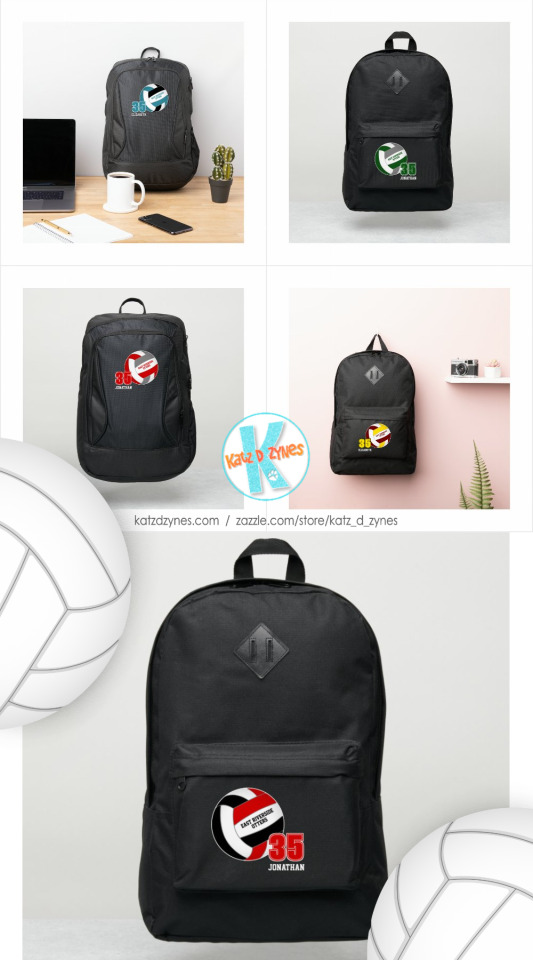
🏐 🎒
Newly styled team colors volleyball backpacks for boys or girls in a variety of team color combinations | easily customize the athlete's name & jersey number as well as team name
https://www.katzdzynes.com/2023/04/new-design-style-volleyball-backpacks.html
6 notes
·
View notes
Text
i love the olympics. no need to get too invested in any one event or sport. i learn just enough about each to go "oooh!" when it looks like it goes good or "ooooh..." when it looks like it goes bad. i graze on them all at my leisure. it's like sports tapas.
24K notes
·
View notes
Text
footage of me doing nothing during pe


#i actually like sports if they're chill but i just cannot bring myself to risk my life in a game of dodgeball#girlblogging#girlblogger#this is a girlblog#female experience#female hysteria#gaslight gatekeep girlboss#pinterest girl#i’m just a girl#shitpost#hell is a teenage girl#girl interrupted#digital girl#girl interrupted syndrome#manic pixie dream girl#girlhood#just girly thoughts#just girly posts#just girly things#coquette#coquette girl#lana del ray aesthetic#lana del ray aka lizzy grant#lana del rey#just girls being girls#this is what makes us girls#tumblr girls#just girlboss things#girlblog aesthetic#hyper feminine
5K notes
·
View notes
Text
Everyone should listen to the full speech Riley Gaines gave. It is exactly how so many feel. Especially those of us who were or are athletes.
#riley gaines#protect women and girls sports#protection of women and girls sports act#women's rights#womens sports#girls sports#sanity#news#politics
2 notes
·
View notes
Photo
I knew these laws against MTFs in female sports would have some collateral damage against cis girls not stereotypically feminine, targeted by sore losers, etc - but I hadn't expected that to be this bad









67K notes
·
View notes
Text
#ass jiggle#thicc af#ass tease#wiggling#big juicy ass#wiggly#thick hips#thick and juicy#phat ass white girl#sports#short shorts#cutie w a bootie#big bootie
6K notes
·
View notes
Text

Volleyball Girl T-Shirt
#volleyball#beach volley#volleygirls#volleyball girls#volleyball training#beach#beachlife#sport#womens sports#girls sports#pink#purple#tshirt#summer
0 notes
Text
why are girls in public school sports teams so hot 😭
#i say this as a bisexual girl in a charter school#sports#sport teams#girls sports#public shool#idk what else to tag this
0 notes